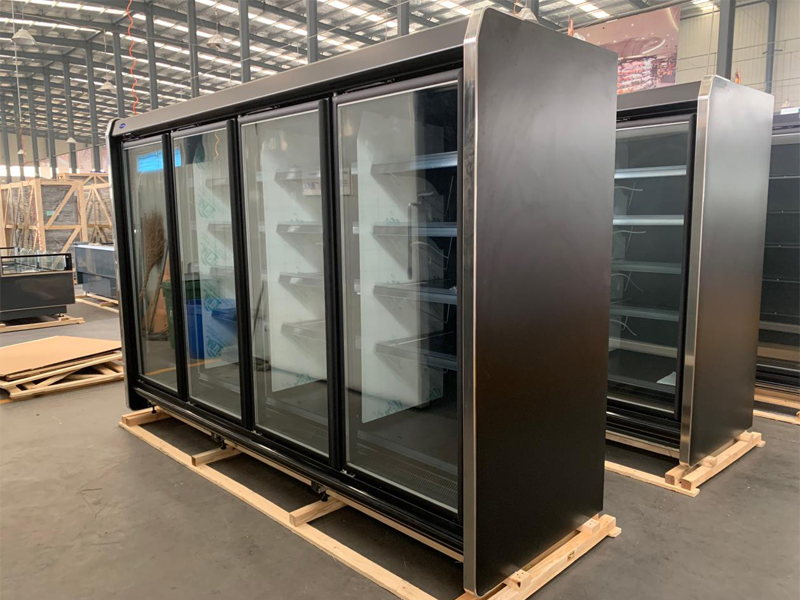1. The heat absorbed by the refrigerant from the cooled space medium when it boils and vaporizes in the evaporator is called the refrigeration capacity of the refrigeration system.
2. In addition to the gas-liquid state change, the refrigerant will also have a liquid-gas state change during the circulation in the refrigeration system.
3. Refrigeration is a reverse heat transfer process and cannot be carried out spontaneously.
6. The liquefaction of gas can be achieved by pressurization or cooling, even if the gas exceeds the critical temperature. 7. The use of steam superheating in the refrigeration cycle is to avoid liquid droplets entering the compressor and causing liquid hammer rather than to increase the refrigeration coefficient.
8. The order of exhaust temperature from low to high for R717, R22, and R134a under the same working conditions is R134a < R22 < R717.
9. If the viscosity of lubricating oil is too high, the exhaust temperature will be too high, but if it is too low, it may cause poor lubrication rather than excessive exhaust temperature.
10. Excessive dirt on the surface of the evaporator will cause the evaporation temperature of the refrigerant to decrease, and the operating current of the compressor may increase.
11. The application of liquid supercooling in the refrigeration cycle is always beneficial to improving the performance of the refrigeration cycle.
12. When using brine as a refrigerant, since the solidification temperature of the brine varies with the concentration, the concentration of the brine is selected based on the solidification temperature of the solution being about 5°C lower than the evaporation temperature of the refrigerant.
13. The vacuum degree refers to the difference between the absolute pressure of the working fluid in the container and the external atmospheric pressure.
14. As long as the surface temperature of the object is higher than the dew point of the air, the temperature will not condense.
15. The essence of refrigeration is to transfer the heat of the low-temperature object to a higher temperature environment.
16. The purpose of subcooling the refrigerant liquid is to reduce the flash gas produced during the throttling process, thereby increasing the unit cooling capacity.
17. The refrigeration oil used in the refrigeration compressor cannot be replaced by general-purpose engine oil.
18. The Montreal Protocol stipulates that developing countries will stop using the transitional refrigerant R22 in 2030.
19. The thermodynamic properties of R134a are very close to those of R12. Using R134a to replace R12 requires some adjustments to the system because the physical properties of the two are different.
20. The heat transfer tubes of the ammonia condenser are usually not made of copper tubes because ammonia and copper will react.
21. Ammonia has good water absorption, but at low temperatures, water will precipitate from the ammonia liquid and freeze. However, what happens in the system is not “ice plugging”, but may cause pipe blockage.
22. Copper tubes are usually not used for refrigerant pipes in ammonia refrigeration systems because ammonia and copper will react.
23. It is true that Freon does not corrode metals, but most of them can be dissolved in oil.
24. The chlorine atoms in Freon are the main cause of the destruction of the atmospheric ozone layer, not fluorine.
25. The actual working process of the piston compressor includes suction, compression, exhaust, and expansion valve processes.
26. Not all refrigeration systems need to install dryers. They are only required when using specific refrigerants and ice blockage is likely to occur.
27. The reading on the pressure gauge is relative pressure (gauge pressure), not absolute pressure.
28. The boiling point of a liquid is related to pressure. The higher the pressure, the higher the boiling point.
29. The refrigerant is a medium used in an indirect refrigeration system, which is different from the refrigerant.
30. Refrigeration is the process of lowering the temperature of a space or object and maintaining this temperature by artificial means.

31. The function of the oil separator in the refrigeration system is to separate the lubricating oil from the refrigerant, not to prevent water from mixing into the lubricating oil.
32. The evaporator is a heat exchange device that absorbs heat when the refrigerant evaporates.
33. If the refrigerant liquid or gas is heated in the cylinder, it will increase the pressure, making it difficult to expand and prone to explosion.
34. R134a is a safe refrigerant. Its lubricant is not mineral oil, but synthetic polyester oil.
35. R134a is a refrigerant that does not contain chlorine. It has no destructive effect on the atmospheric ozone layer, but it is a greenhouse gas. Once it is discharged into the atmosphere, it will enhance the greenhouse effect.
36. R22 is widely used in household and commercial local air conditioners and chillers. It is an HCFC refrigerant and is banned in developing countries by 2030.
37. If ammonia leaks out of the refrigeration system and mixes with air to a certain proportion, it will be dangerous to fire and explode when it encounters fire.
38. Specific heat capacity is an indicator to measure the performance of the refrigerant, but it is not the only important indicator.
39. The cooling capacity of a large refrigeration compressor is above 550kw.
40. Mixed refrigerants are divided into azeotropic refrigerants and non-azeotropic refrigerants.
Post time: Mar-04-2025









